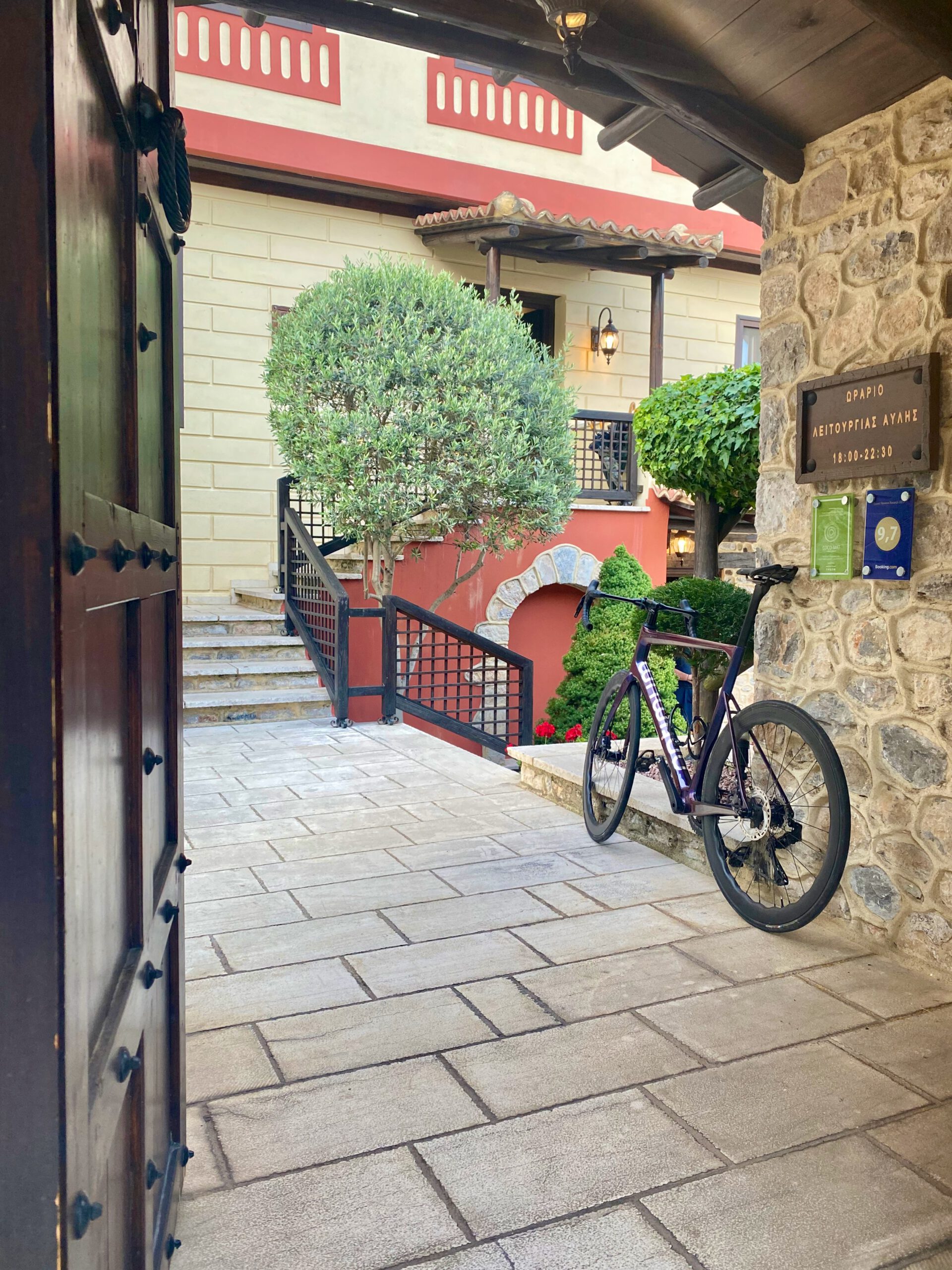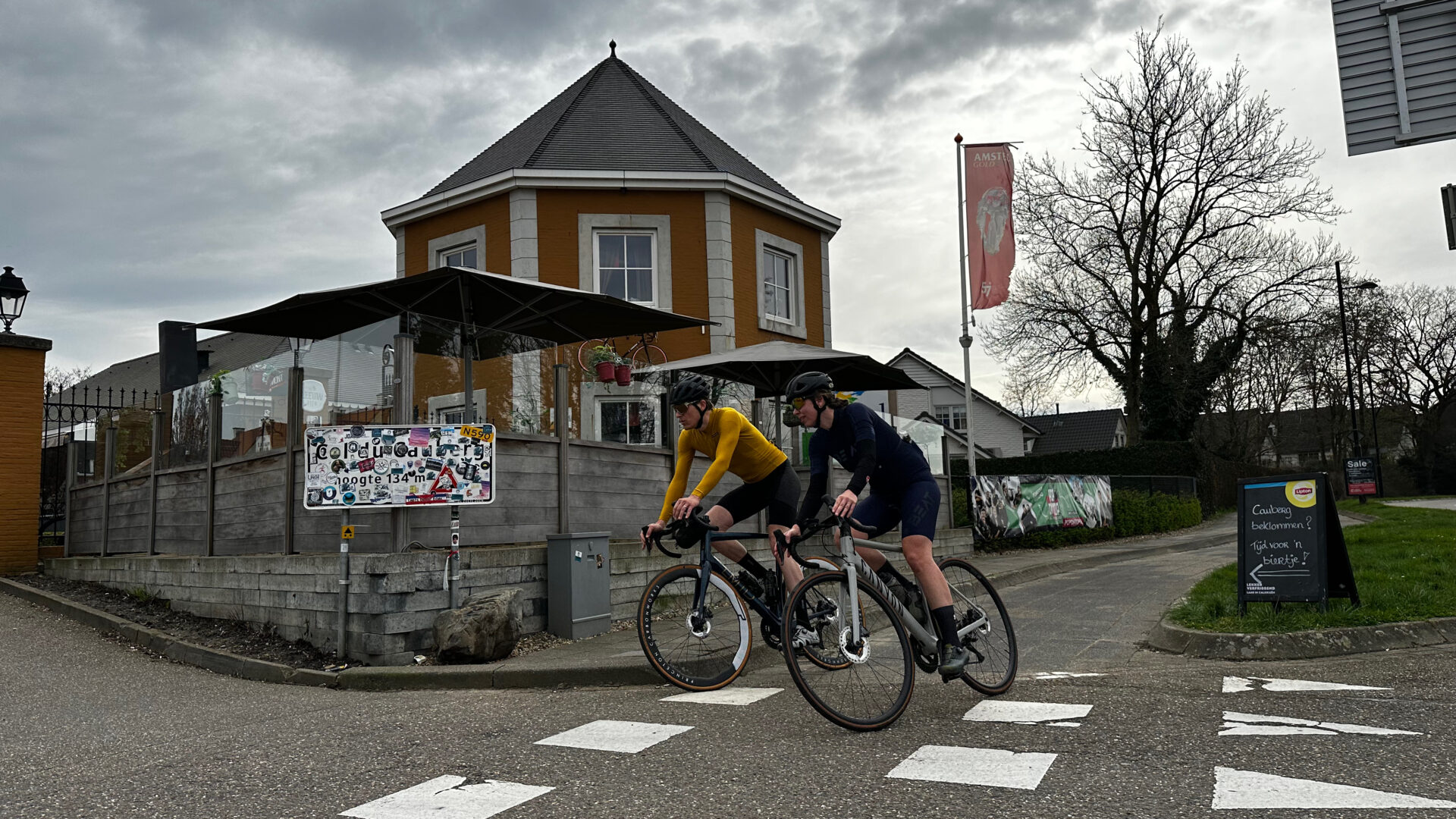We are a platform for cycling adventures. True, but even with that in mind, training and preparing for a cycling adventure in the Netherlands or abroad does matter. Not everyone rides outdoors all the time, in every circumstance. We don't judge. Certainly also the time factor, makes you choose indoor cycling over outdoor cycling at times. As far as we are concerned, indoor training is indispensable if you have a goal in mind: that can be a big goal, such as the Maratona or the Marmotte but also smaller goals like 'the first time the Cauberg' or just cycling 100 kilometres for the first time. With the rise of advanced indoor cycling trainers, it is now easier than ever. . In this article, we give a few different options for your ideal indoor cycling setup. With tips on indoor training, trainers, training programmes and more.
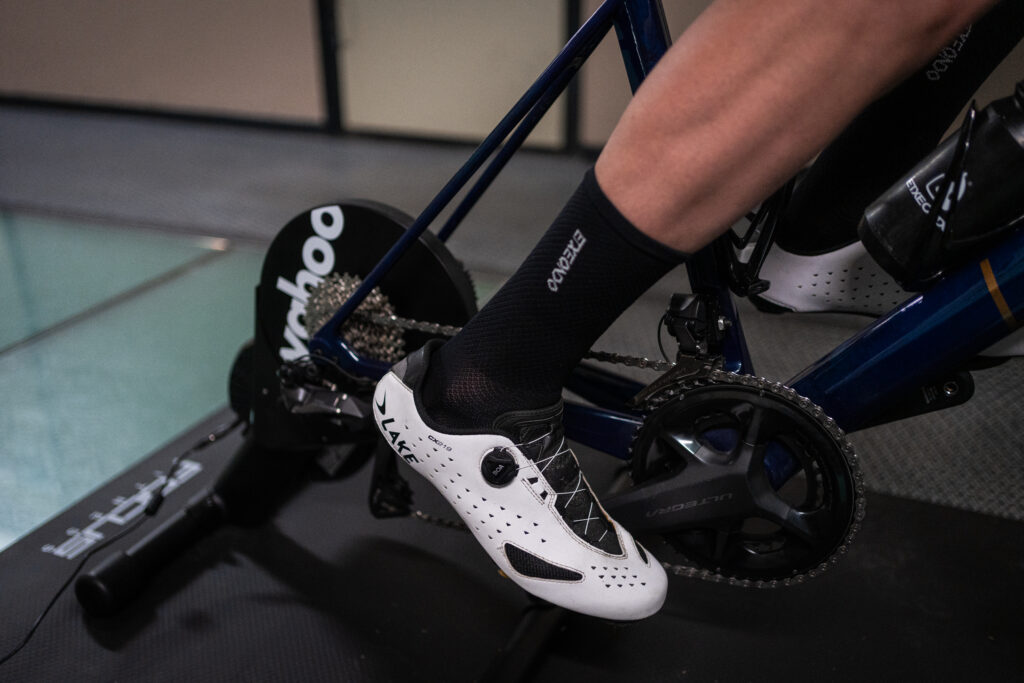
Types of Indoor Cycling Trainers
When I once started cycling, there was really only one type of indoor trainer and there were no online training programmes yet. Yes, you could put a DVD in the player and with a bit of artifice you could then cycle up virtually. You were always limited to the DVD and it felt rather artificial. With the advent of new technology, all that has changed. In general, you have a distinction between two types of trainers:
- Basic Trainers: these trainers provide resistance and you can train and output (with or without the help of a digital meter). It's indoor, it's cycling, but it's harder to train specifically in your strength zones. These trainers often have a brake roller (and are therefore 'Wheel-On' trainers, as you read heir below. Advantage: they are very cheap and take up little space. Disadvantage: less targeted training
- Smart Trainers: this type of trainer can communicate the power you deliver to your computer, tablet or smartphone and with that you can start cycling virtually. Simply put: with the right software, you can read the values you pedal on your screen and thus train very specifically. The advantage is thus better results and more targeted training. Disadvantage: you often need a power point and you will spend more euros on the purchase.
- Roller bench: a popular tool for 'warming up' before a match. You can also use these indoors. You do need a bit more technique to do this properly, but if you have that technique, this is the cheapest way to train indoors. Note: you can't stop pedalling, because you'll fall over 😉
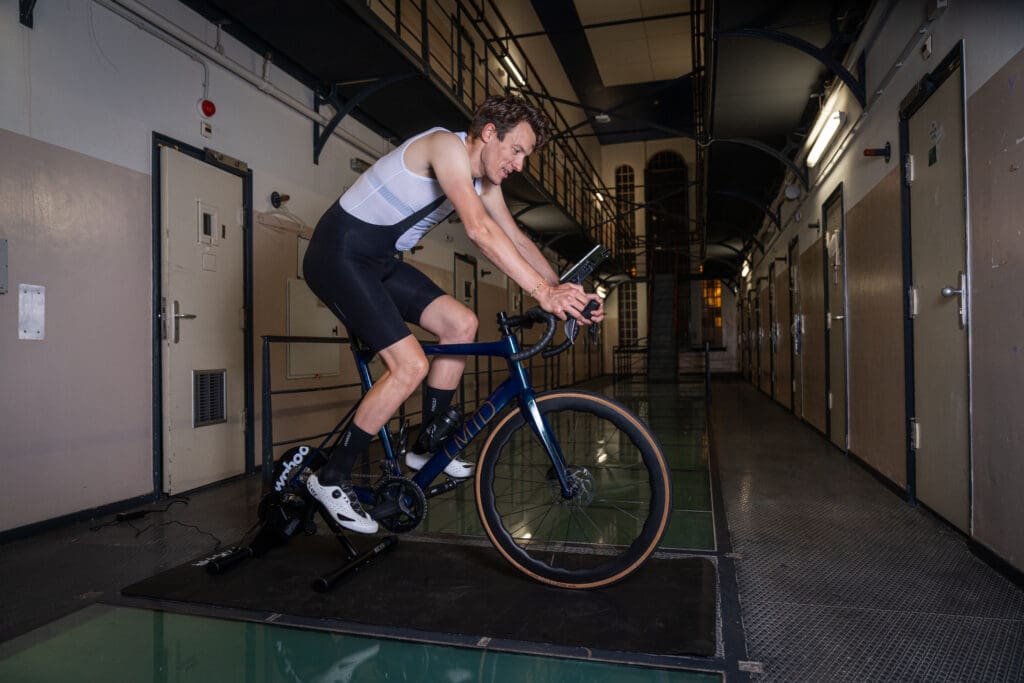
Indoor training: lots of choice in types of trainers
If you make the choice between a basic or a smart trainer, you then again have a number of options to choose from. Although the 'direct drive' trainer is one of the most popular options, there are still differences and you can also opt for other (sometimes very expensive) alternatives.
- Direct-Drive Trainers: With a direct-drive trainer, you remove the rear wheel from your bike and put the bike directly on the trainer. Ideal, because it stands firmly, you have the right cassette on it and you can pedal nicely. These direct-drive trainers transmit resistance well and you can easily adjust with software on your computer. They are generally pretty quiet. The disadvantage is that the average direct drive trainer starts from €500. Well-known brands like Wahoo and Tacx have a basic variant and then a more expensive option. The latter is well over €1200 with both major brands, such as the Tacx Neo 2t, to name but one example. Other brands offering a direct-drive trainer include Elite (Italian), TrueKinetix (Dutch) and Saris (American). Technogym, the high-end Italian manufacturer also has a direct-drive trainer, but which is over €1800.
- Wheel-On Trainers: If you are just starting out in cycling, this is the most affordable option. You mount your bike on the trainer with the rear wheel still in place and you can start almost immediately. Disadvantage: you need a wheel with a trainer tyre and you really need to secure the bike well or you will shoot out. Another point: take a moment to put a book or holder under your front wheel, otherwise you will ride down a small incline. As well as trainers from Tacx and Wahoo also many other options, from cheap to more expensive. Elite and Saris, among others, offer good, reliable alternatives.
- Smart Bikes: This is the 'top of the bill' when it comes to indoor bikes and indoor bike trainers. With these Smart Bikes, you don't need to take your bike out of the shed. You get the idea: you'll have to bring your wallet, though, because from just under €3000 you own one of these smart bikes. The options are endless and you have to have the space for it. But if you're going for precision then this is the way-to-go. TrueKinetix, Wahoo, Tacx as well as Technogym all have trainer bikes like this, which should come closest to the real cycling experience.
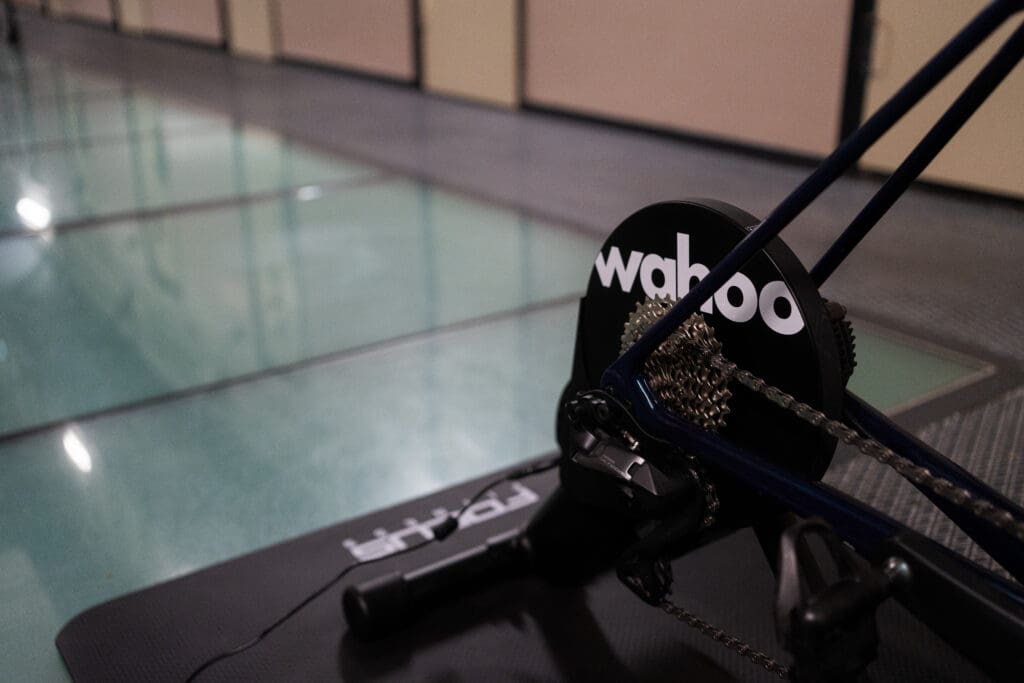
2. Considerations when Choosing an Indoor Cycling Trainer
If you want to go indoor cycling and you are looking for a good indoor cycling trainer, you have to deal with a number of parameters. Cycling is an expensive hobby, indoor cycling doesn't help with that. So if you don't have infinite resources, budget is always an important factor, but anyway, here are a few things to think about when choosing and buying an indoor bike trainer
Budget
Your budget is an important factor. Direct-drive trainers are generally more expensive, but offer more features and a better experience. Which is a good option: marketplace. Especially in the corona pandemic, a lot of people bought an indoor trainer and they no longer use it. For a pittance, you sometimes have a nearly new trainer. This applies to every season, by the way, because even in December/January you will come across many trainers from people who started enthusiastically, but prefer to train outside, rather than inside (or not at all).
Compatibility
Make sure the trainer is compatible with your bike. Now, many trainers are equipped to accommodate almost any type of bike, but pay attention if:
- Your type of cassette/shift system can be fitted to it
- Whether your frame width can fit on it
- On a small bike: do you have the right tyre size?
- On an older bike: do you have the right cassette combination so that it fits the trainer?
Power and Slope angle
This is always a funny number. Because most new (direct drive) trainers offer a maximum power output of 1600-1800 watts. Just for those in the know: the average amateur, NEVER KICKS THIS! So don't let yourself be talked into a trainer with which you can fly to the moon, so to speak. 1600 Watt is more than enough if you have no competition ambitions. Also the simulated gradient: how often are you going to cycle the Angliru indoors? Fat chance: 0 times. Because 1: it's no fun at all and 2: it often doesn't fit into your training schedule. So forget that slope angle. Maximum 15? Totally fine. Maximum 10% is sometimes just too little, but again: the chances of pedalling 10% or more indoors for any length of time are pretty slim. Unless you like doing the Mortirolo indoor, but then you're soon of a different level in terms of craziness.
Training goals
Determine your training goals and then see if everything you want to do is possible with the trainer you are looking for. In fact, you'll soon find that the best way to train and prepare is with a direct drive/smart trainer. Then you can train specifically and really 'go with the flow'.
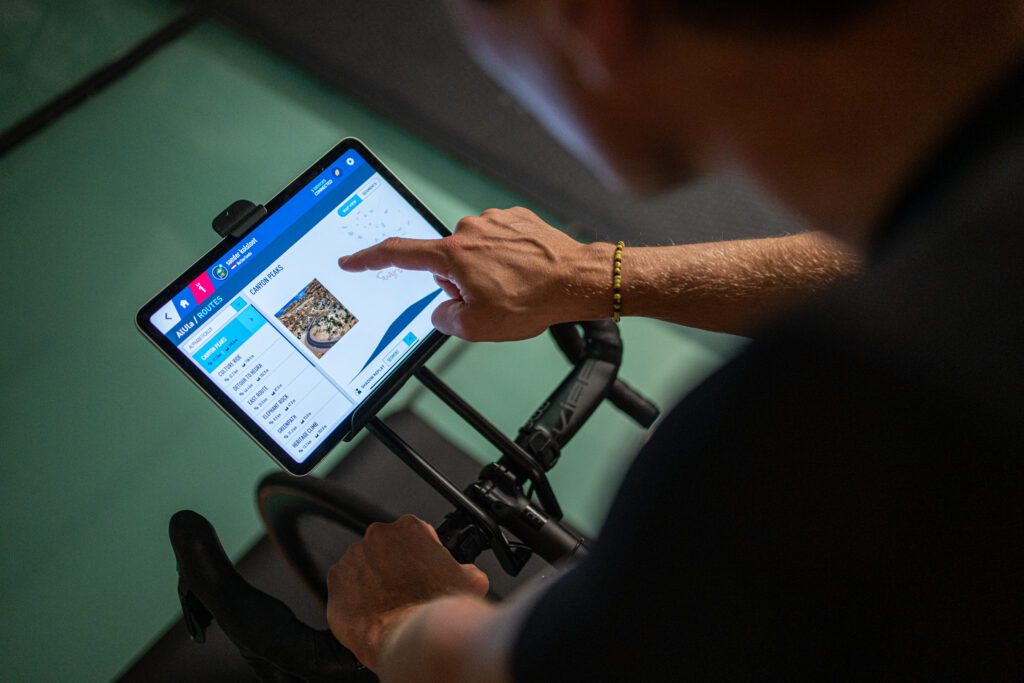
3. Training apps and Software
The right indoor training software is important if you have specific goals in mind. Actually, you can only use one of the training programmes well for preparing for your cycling adventure and that is ROUVY, as you ride around in the 'real' world there. The other apps are almost all virtual worlds and although you can follow good training programmes, this is different for the feel.
Here are some options to go indoor training listed, including costs!
- Zwift: the proverbial 'mother of all training software'. The market leader and size maker. You can cycle an ever-increasing number of virtual routes, including in real places, such as London, Richmond (USA), Glasgow and Innsbruck. Surely the most important world, in which you can cycle, is the virutal Watopia, where you can cycle a climb that mimics the Alpe d'Huez. Without the views, though. Cost: €19.99 per month (or €199 per year) - ZWIFT
- Extra tip: Zwift organises competitions, has its own Zwift groups and nowadays also its own trainer! Nothing wrong with that
- ROUVY: Zwift Challenger. Here, the choice has been made to use the 'real roads' on which your puppet is then projected. You see the surroundings, you have the idea you are somewhere else. The downside remains that traffic is also present. So yes, you will continue to see those crazy cars and other cyclists. The range of routes is huge, so your next destination is sure to be among them. Cost: €14.99 per month, but as a couple it is only €19.99 per month (!) And you can also pay by the year and then it is only €12.40 - ROUVY
- MyWhoosh: Offers a good alternative to Zwift, but for now has fewer routes and 'worlds' you can cycle in. Does have more 'real roads' instead of the virtual Watopa. Money like water, so expect lots of new developments in the near future. Cost: FREE - MyWhoosh
- BKOOL: Similar to Rouvy, but slowly dying because too little community. Cost is lower than Rouvy: €11.00 per month
- Trainerroad: This one has been around for a while, but it really lacks the ability to cycle online. You do see your training progress, but you proverbially go back in time. Cost €19.99 per month. Well: unlimited entertainment options!
- FulGaz: Another alternative to the many options. For €21.99 a month, you virtually drive laps in this app. They are real roads, filmed by pros (or your own input).
4. Accessories for Optimal Training
- Matt A mat under your trainer helps reduce noise and protects your floor when you go Indoor Training. It's fine also for catching sweat drops and at the end of the day, it just looks slick too! As this floor mat
- Fan A good fan provides cooling during intense training sessions. You can go for a real fan that also adjusts to your effort. Or you just use the old-skool rotary fan when you go indoor training. For a few tenner, you're then set: Your choice 😉 No fan = RAMEN OPEN!
- Heart rate monitor (and Cadence): Without a heart rate monitor, your indoor workout is almost pointless. So buy one allowing you to measure your heart rate accurately. A strap around your chest is still the most accurate measurement, although a wrist heart rate via a watch should do as well. A cadence meter (which most trainers have built in) is also nice. Many training programmes give an ideal cadence for a given workout. Now to count the number of revolutions when you are just making a maximum effort....not useful.
- Table or tablet holder: You train with a trainer that sends the signals to your computer or your tablet. But you need to put that somewhere. A table or a tablet holder is then very handy!




